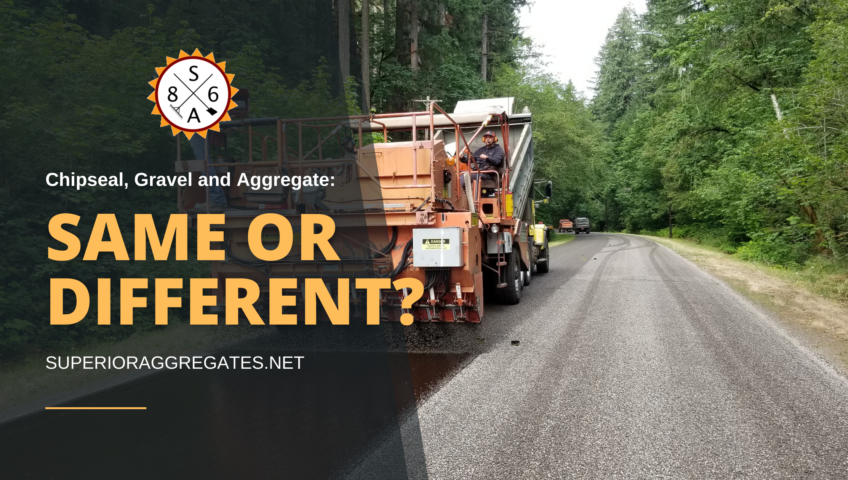
Chipseal, Gravel and Aggregate: Same or Different?
Chipseal, gravel, and aggregate are 3 excellent options for keeping a firm ground and building sturdy foundations. But, as anyone who has poured the wrong kinds of rocks into a driveway, drainage field, or pool can tell you, the end results can be devastating if you use the wrong time.
Some differences are subtle, with aesthetics and traffic quality sticking out the most. Some thing just feel better. What’s more important is when you use the wrong material.
Here are your best uses for chipseal, gravel, and aggregate. Know their potential and tailor their benefits for your projects with safety, efficiency, and convenience in mind.
What Is Chipseal Best For?
Chipseal is asphalt that goes through a few processes for the final product. A thin layer of heated asphalt is sprayed on a surface, and then smaller chips of aggregate are added on top. A compactor follows, pushing the chips into place and making their positions more uniform.
After compacting, the chipseal needs to be swept or lightly bugged to remove excess chips. This isn’t a heavy, firm buffing that yanks the chips and scrapes up the cooling asphalt–it’s just enough to remove pieces that aren’t firmly stuck to the project.
Chipseal is great for roads, and it’s 1/4th or 1/5th more affordable than standard asphalt spreading techniques, with a life extension of about 5 to 7 years according to the Department of Transportation.
If you’re repairing a road and need a maintenance plan for anything that has general use traffic, chipseal is a great option. It’s all about correction, preservation, and maintenance.
What Is Gravel Best For?
For people who aren’t used to foundation and paving materials, everything is gravel. It has become a general term, but if you want to avoid buying the wrong kind of rocks, stones, or crumbly bits–whatever you call them in your head–it’s time to look at gravel specifics.
Gravel is measured by its particle size, or the size of the materials in the gravel pack you buy. There are two scales to keep in mind:
- Granular – 2–4 mm or 0.079–0.157 inches
- Pebble – 4–64 mm or 0.2–2.5 in
- Fine – 2.0 to 6.3 mm
- Medium – 6.3 to 20 mm
- Coarse 20 to 63 mm
Gravel is best used for walking paths, driveways, or if you want the rolling, smaller rock features in your hardscaping. It’s easy to walk on, provides decent grip for parking areas, and is easy to replace.
What Is Aggregate Best For?
Aggregate is a combination of different materials. In most products, it means having coarse and medium grains mixed together.
The size isn’t the only difference–different aggregate packs can include different material types. Sand, crushed stone, recycled concrete, slag, and gravel can be included. Aggregate may combine both of the previous materials and add a bit more.
It’s important to know what kind of aggregate you’re using. For foundations where standard rocks are fine as long as the proper filler is involved, you can use any type you want. If you can’t find a supply for a specific, single pack of materials, you might want to find an aggregate supplier that delivers a close enough mixture.
How do you find out? Along with reading the packaging, ask the supplier. Some people will ask where the aggregate comes from, such as a specific quarry or recycled from another construction project. You might even figure out if they can source the actual materials you need, or guarantee a close enough mix.
If you need help figuring out which material to use for your next project, get in touch with a construction and landscaping materials professional today.
